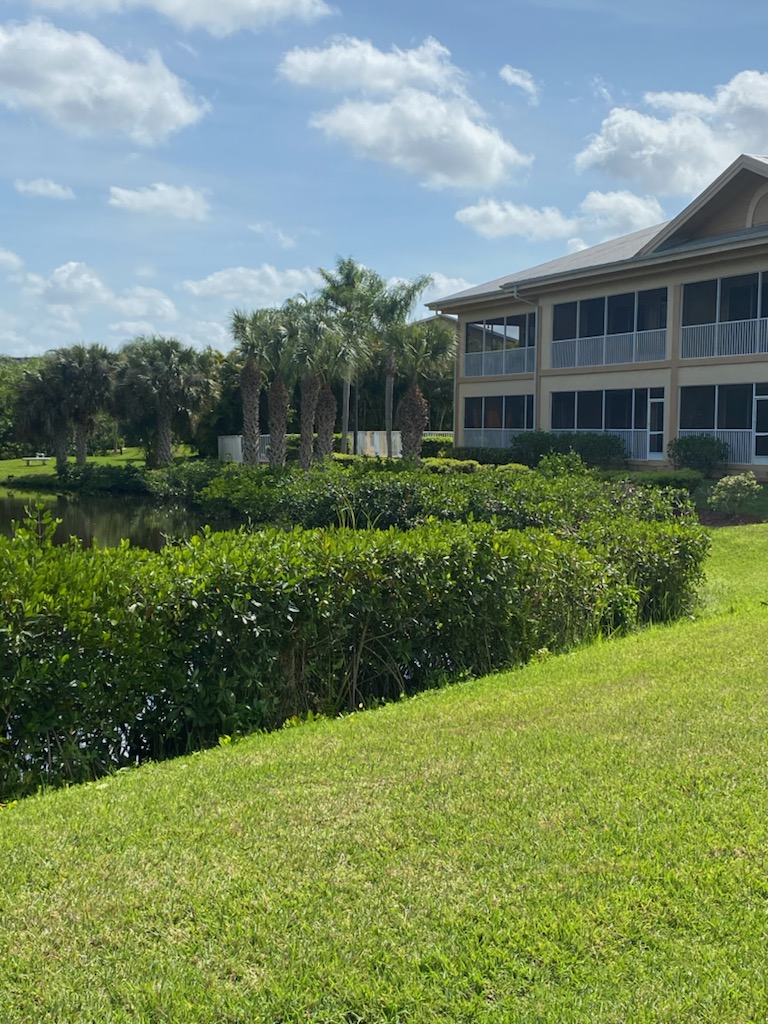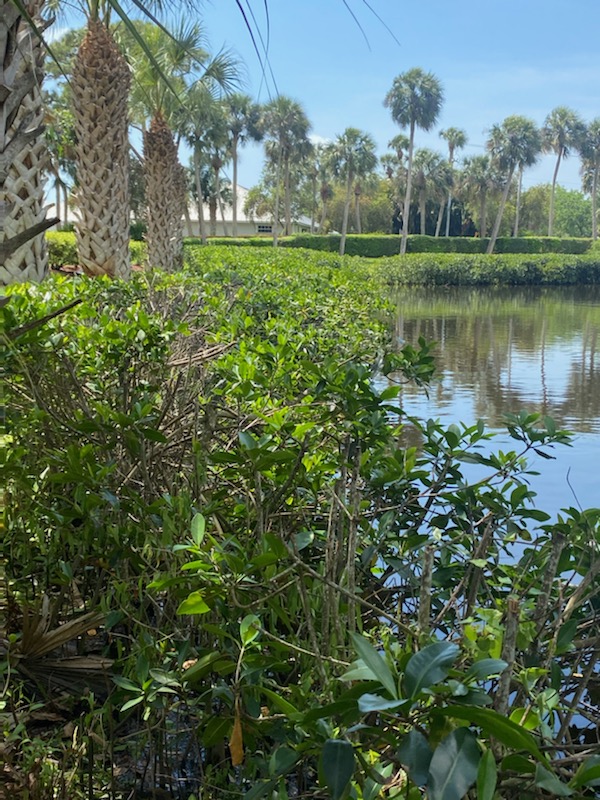
Are you a homeowner with a view of the ocean? Do you have mangroves growing on your property? These trees play a vital role in maintaining the health of Florida’s shoreline. They serve as natural barriers against erosion and storm surges, protecting coastal areas from the impacts of hurricanes and other extreme weather events. Their complex root systems create habitats for various marine species. Furthermore, mangroves act as nurseries for young fish, contributing to the health of fisheries. They also filter pollutants and improve water quality. Because mangroves are invaluable to our state, their trimming and alteration are regulated by the Mangrove Trimming and Preservation Act.
We all know how pleasant the view of the ocean is. So, we’re here to help you find the balance between your mangroves’ thick foliage and your desire to enjoy the serene view of the waves lapping on the shore. Keep reading to learn more.
Trimming Guidelines
In Florida, homeowners may trim mangroves on their properties when they exceed 6 feet in height but are not taller than 10 feet. It is essential not to trim mangroves below the 6-foot mark. For mangroves over 10 feet tall, it is required to seek the services of a professional mangrove trimmer. When trimming trees over 16 feet tall, it’s best to do it in stages, removing no more than 25 percent annually. For mangroves over 24 feet tall, authorization from the Department of Environmental Protection (DEP) is required.
If your property’s shoreline is longer than 150 feet, 65 percent of the mangrove trees can be trimmed. Homeowners can also trim mangroves that were previously legally trimmed, but the trimming must maintain the previous height and configuration.
Why Is Professional Mangrove Trimming Important?
Improper trimming can cause severe harm to the tree, potentially leading to its death. So, if you’re unsure, it’s best to leave the job to the experts!
Also, you should keep in mind that under the 1996 Mangrove Trimming and Preservation Act (MTPA), dead mangroves and dead portions of living mangroves are protected similarly to living mangroves. Dead plants and stems offer habitat and detrital material and should only be trimmed to the same extent as living mangroves.
General Healthy Trimming Strategies
At Joshua Tree Inc., whenever we undertake mangrove trimming, we make sure to adhere to the following guidelines. First off, when we trim a branch, we ensure a clean cut—right where the branch connects to another branch or trunk. To achieve this, we make sure our tools are clean and sharp. We also never use pesticides or pruning paint on the cuts, as these can interfere with the tree’s healing process.
The best time for trimming is during the cooler months, from October through March. This is when the mangroves aren’t busy growing new branches and leaves and have more energy for a successful recovery from trimming.
Different Trimming Styles
The main three trimming styles are the following:
Windowing
This style involves selectively removing limbs within the lower or central area of the tree to create a view while maintaining shade, privacy, a windbreak, and wildlife habitat. The bottom height of a window should not be lower than 6 feet from the substrate, and the recommended maximum canopy opening is 1/3 for smaller trees and 1/5 for larger trees.
Hedging
Not all trees can be trimmed down to 6-foot hedges. The leaf mass must remain on the tree for it to continue its life processes. Hedging is not recommended for red mangroves or mature black mangroves.
Undercutting
Trimming the lower portion of a tree (below 6 feet) is allowed, but it is not preferred due to the potential damage to mangrove propagules colonizing that area.
Trimming Different Types of Mangroves
When it comes to mangroves, the different types require different trimming methods:
Red Mangroves
Red mangroves are a bit delicate when it comes to pruning. They mainly grow from their branch tips—”apical meristems”. If we remove most of the leaves and apical meristems, the tree will struggle to survive because red mangrove stems over an inch thick won’t grow back.
Red mangroves hardly ever bounce back and won’t resprout most trimmed branches. So, what’s the best approach? We’re better off trimming windows from the lower part of the canopy, as long as the bottom of the window is at least 6 ft. from the substrate, to avoid messing with young mangroves growing in the windowed area.
The aerial/prop roots cannot be cut without authorization. These roots are pretty smooth, and you can easily tell them apart from the stems, which have obvious scar rings going all around them. We should be extra careful with red mangroves and give them the TLC they deserve!
Black Mangroves
Now, let’s dive into some trimming guidance for the black mangroves! Here’s the deal: black mangroves can handle most trimming pretty well, but we need to watch out for the mature ones. They’re not as good at recovering from excessive trimming compared to the younger ones.
Black mangroves are real champs with their strong, dense wood, and they make awesome windbreakers. So, for those larger-diameter trees, we highly recommend windowing; it’s a solid choice.
White Mangroves
They’re the rock stars of tolerance where trimming is concerned; even hedging is on the table! These mangroves are pretty unique because they have this cool reserve growth capability in their meristem—it’s like a special tissue along their trunks. And guess what? This meristem can provide some reserve energy to help the tree bounce back from trimming. How awesome is that?
White mangroves can develop blocked vessels as they age, leaving some parts of older trees a bit weak. So, when we’re trimming these guys, we’ve got to be mindful of the balance of their weight and how they look.
For professional mangrove trimming services, reach out to Joshua Tree Inc. We are ISA-Certified and are always ready to help you strike the right balance between your ocean view and the health of the mangroves growing on your property. Contact us today!

